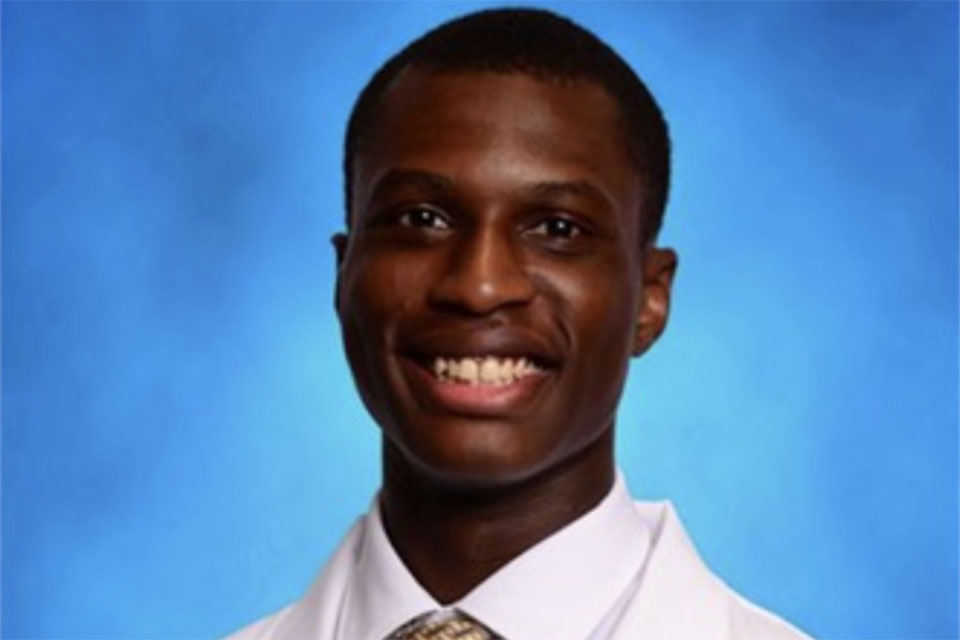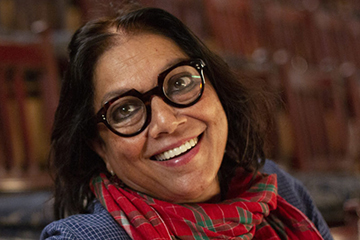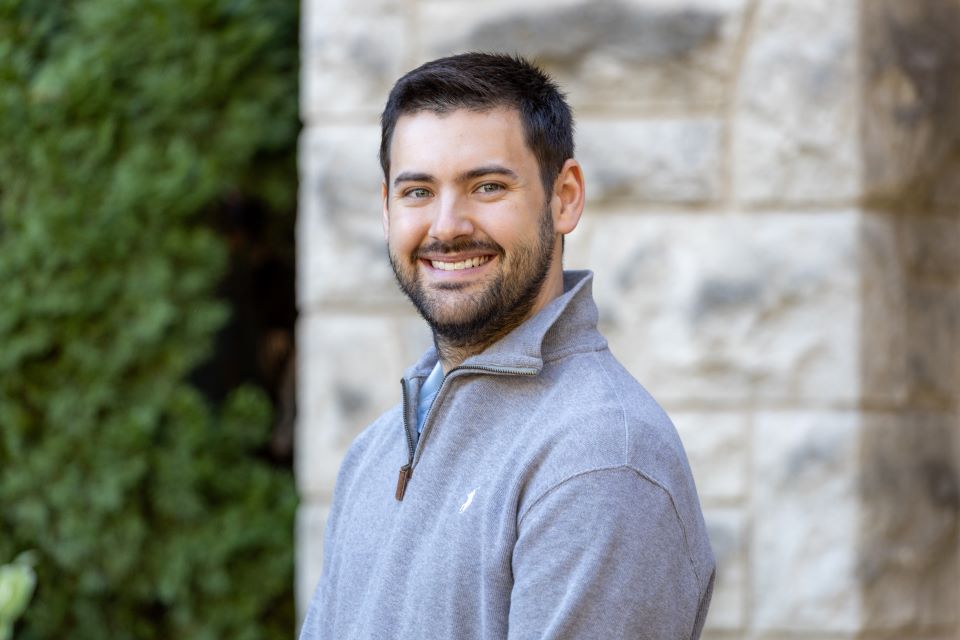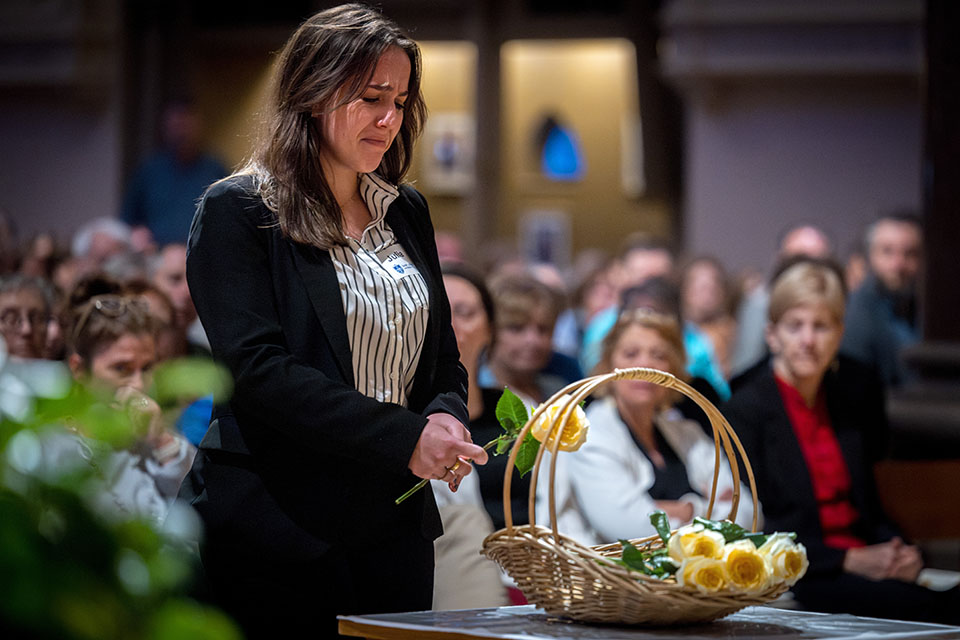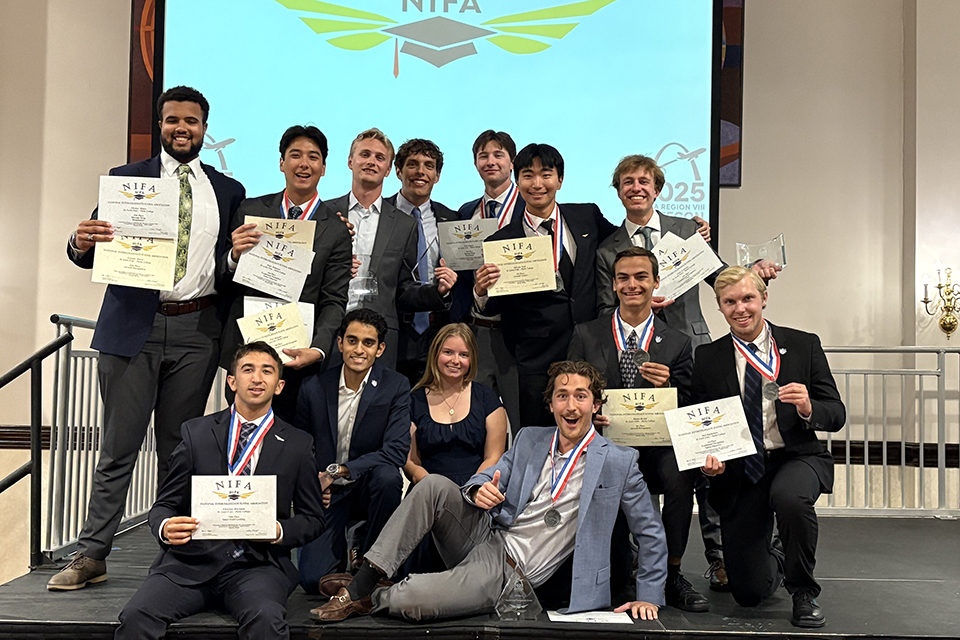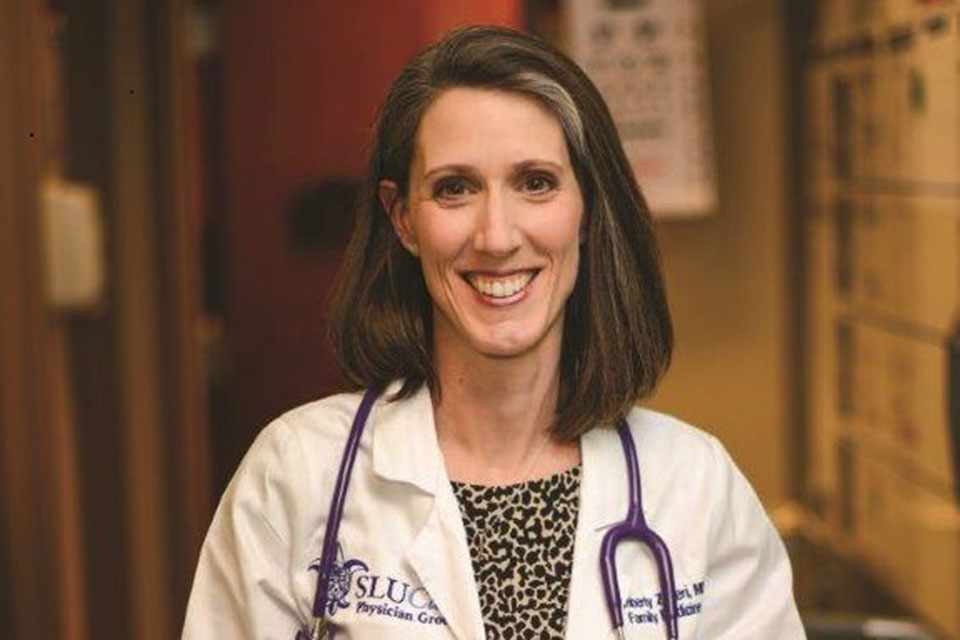(Re)Living History at Cahokia Mounds
It’s one thing to read about an ancient civilization in the history books, but it’s a completely different matter when you hold that history in your hands.
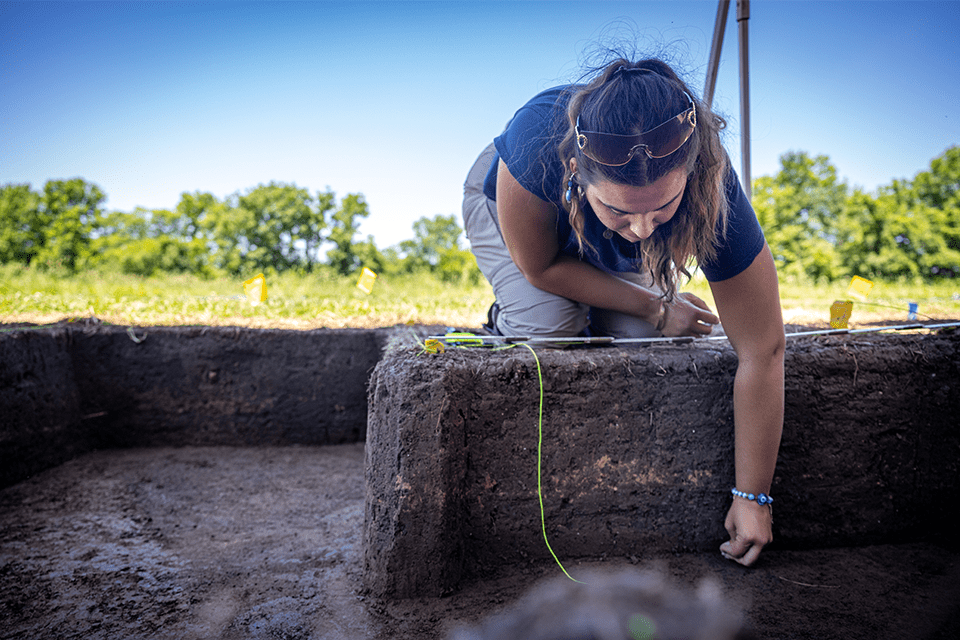
For four weeks this summer, students traveled from campus to the western periphery of Cahokia Mounds excavating multiple areas and making exciting discoveries. This year’s excavations found multiple drill bits, microdrills, pottery sherds, and more. Photo by Sarah Conroy
Saint Louis University students, along with SLU faculty, volunteers and visiting students from universities across the country, got a chance to unearth history this summer at archaeological excavations at Cahokia Mounds State Historic Site in Collinsville, Illinois.
For four weeks this summer, students traveled from campus to the western periphery of Cahokia Mounds, excavating multiple areas and making exciting discoveries. Cahokia Mounds is a prehistoric American Indian chiefdom dating from A.D. 1050 – 1350. During its height, perhaps 10,000 - 20,000 people lived in the city, where approximately 120 mounds existed, the largest of which is known as Monk’s Mound. The site is the largest and most complex prehistoric chiefdom north of Mexico.
“This area of the site is intriguing, because we think that it may be a civic ceremonial area attached to the chiefdom,” said Mary Vermilion, Ph.D., associate professor of sociology and anthropology at Saint Louis University. “When we first came to the site, the first structure we found had quite a few microdrills. Then a few years later, we found a sweat lodge. So with each dig, whenever we answer one question, 20 more pop up. Cahokia is an incredible investigative tool for not just what happened in prehistory, but how that applies to today's world, and we’re happy to do our part to try and answer that question, even as more questions pop up along the way.”
Under the supervision of Vermilion, students plotted the excavation sites, ensuring an accurate record-keeping of anything discovered in the dirt. When an artifact is found, it is photographed and logged, and then placed in a container to later be cleaned and recorded in the lab. This year’s excavations found multiple drill bits, microdrills, pottery sherds, and more. The group also found differentiating soil types, possibly pointing to multiple structures being built in the same spot, one over another.
This year’s excavations continue a tradition of SLU students breathing life back into an ancient civilization more than 1,000 years old and just minutes away from campus.
Brittany Murray, an archaeological SLU student from the 2011 excavations, returned to visit this summer and was brought right back to her days as an undergraduate.
“Ever since I was here in 2011, I have just loved being in the dirt,” Murray said. “It’s fascinating and fun, and you get to see so many cool things. SLU is always really good about providing research opportunities, community impact opportunities, they're all about servant leadership, which is amazing. So getting out to be here at an archaeological site that is so close to the university that you can go out and visit later in life is just amazing. And it's a really unique opportunity.”
Following each dig, the students return to the lab to spend two weeks carefully cleaning and cataloging each artifact recovered. The artifacts are analyzed and interpreted, and all records are complied, adding to the growing body of knowledge found throughout the years at the dig site. Each year, the results are also distributed to various research centers, for access by other researchers.
“I always tell students, ‘When you dig it, you destroy it’,” Vermilion said. “We have to keep very precise records, because once the dirt is disturbed and that artifact is removed, the context has been disturbed; it can never be the same again. So there are notebooks after notebooks after notebooks and all kinds of papers on their clipboards, all about what we’ve found. They keep journals for everything that they do. It’s a huge learning curve, but usually, by the end of the first week, they're operating like professionals. And that’s the point, we want them to get experience and do real archaeological work, because just like these artifacts, that knowledge is invaluable.”
For those within the archaeological and greater St. Louis community, continuing to learn about Cahokia and the pre-colonial history of the country is vitally important.
“It is very unique,” Vermilion said. “There are lots of archaeological digs that are done around the country. But Cahokia itself is such a unique site, and that presents unique opportunities and challenges for us all. We’ve been coming out here for years, it’s hot, it’s humid, but we love it.”
Latest Newslink
- SLU, Collegiate Strengthen High School-to-Medical School PathwayA partnership between Saint Louis University School of Medicine and local high school Collegiate School of Medicine and Bioscience serves as a model for how early exposure and mentorship can transform lives—and communities— as SLU invests in future physicians.
- St. Louis Literary Award Discussion with Director Mira Nair Moved to November 13Saint Louis University will hold a Zoom discussion with "The Namesake" director Mira Nair on Thursday, Nov. 13. "The Namesake" is based on the novel of the same name by Pulitzer Prize-winning author Jhumpa Lahiri, the 2026 St. Louis Literary Award honoree.
- Two Companies Led By Saint Louis University Alumni Awarded 2025 Arch GrantsTwo firms led by Saint Louis University alumni received 2025 Arch Grant awards. GenAssist, led by Gabe Haas (SSE ’20) and co-founder Joe Beggs, and Decodable Reads, led by Paul Heinemann (A&S ’18) and Joe de Lorimier (CSB ’19), are part of a cohort of 19 new businesses receiving Arch Grants funding this year. GenAssist was one of four companies in SLU’s inaugural New Venture Accelerator (NVA) cohort in 2024.
- SLU Students Commemorate Legacy of Gift Body Donors at Memorial ServiceStudents from Saint Louis University’s School of Medicine Class of 2029, along with graduate students from the SOM's Master of Anatomy program and the Doisy College of Health Sciences, recently gathered for an interfaith memorial service to honor 355 individuals who generously donated their bodies to SLU’s Gift Body Program.
- SLU's Flying Billikens Secure Spot in 2026 National Intercollegiate Flying CompetitionA team of aviation science students from Saint Louis University’s School of Science and Engineering placed high enough this weekend to secure a spot in the 2026 National Intercollegiate Flying Association (NIFA) Competition. This is the third straight year the team has qualified for the national competition.
- Frequent Heartburn May Signal Risk for Alcohol Use Disorder, SLU Study FindsA new study from Saint Louis University reveals that individuals with frequent heartburn—clinically known as gastroesophageal reflux disease (GERD)—have a higher chance of being diagnosed with alcohol use disorder within two years. Researchers are urging primary care providers to screen GERD patients for alcohol misuse during routine visits.









